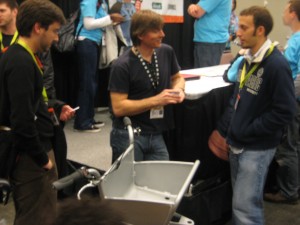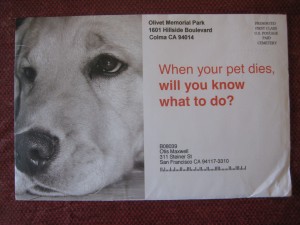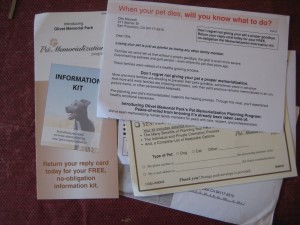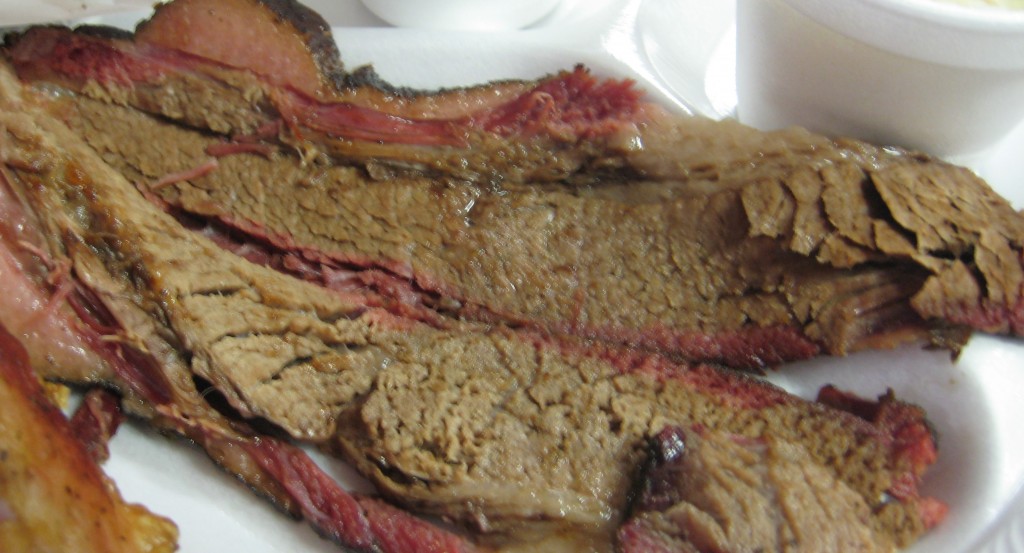
It isn’t hard to make good brisket. (Brisket = barbecue, at least for the purposes of this article.) You need a reasonably fatty piece of meat, USDA Choice or higher. You need a rub containing brown sugar for a nice crispy crust. You need a smoker with a good tight seal to keep the smoke in while letting air circulate so the fire won’t go out. You need moisture, in the form of well soaked wood or chips and a steaming pan inside the cooker. And most of all you need patience. Have all those elements at the ready and you can look forward to a tender and tasty piece of meat several hours hence, whether you use a massive smoker and aged hickory logs or a backyard kettle with chips on top of charcoal.
It is, however, hard to make great brisket. And that is why Texans of all ages and social perspectives travel considerable distances to taste the best that can be had. On a recent trip to South by Southwest I found myself on such a journey, repeating some of the same itinerary as when I coming down from Dallas in my college days not a few years ago.
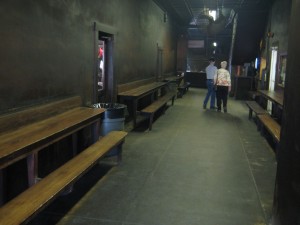
First stop is Lockhart, 30 miles south of Austin by a fast country highway. This is the home of Smitty’s and Kreuz’, two establishments with near-identical menus and customs. The tale is that the owner of Kreuz died and had a son and a daughter, and he left the business name to the son and the original smokehouse and market to his daughter.
For a proper Smitty’s experience you need to go in from the original entrance on a sidestreet, not the big parking lot next to the highway. You will pass through a long dark hall lined with hard wooden counters and benches. When I was young these walls had big dull knives hanging on chains. You would buy your meat by the pound, bring it to the counter, and hack it with a knife to your liking. I assumed somebody came along and wiped the knives clean at the end of the day. Even so they would not pass today’s health regulations and today the hallway exists only as a relic.
From this you emerge into the pit room, a dark smoky atrium which probably should be visited in summer heat for a properly hellish atmosphere. You will gingerly step past an open fire to get to the counter. In the background a butcher is prepping meats on a butcher block and a counter person will scoop up your order for “hot rounds” (sausages tied together at the end), brisket and ribs by the pound.
You’ll also get a few slices of white bread in case you want to make a sandwich, or crackers if you prefer. The counter person weighs your food and delivers it on a large piece of butcher paper atop a smaller piece of butcher paper (this is your plate) and you carry this into a big dining hall where you can buy sides and soda or beer. There’s sauce on the tables, not the sugary abhorrent “BBQ sauce” found in supermarkets but a thin red mixture that’s like a mild Tabasco.
I always take my first bite neat, no sauce. I am looking for a smoky dryness, an intense flavor of beef combined with the effect of long smoking. Even though brisket is a fatty cut, it has gone through hours of cooking and lost much of its original weight and the first taste and mouth feel should not be fat, pleasurable though that may be. And I don’t want chewy meat. Fall-apart tenderness is a plus, but not mandatory; what is essential is that the texture of the brisket should not distract from the taste.
My meal was a rib, 1/4 pound of brisket and a hot round. The rib was tender but the brisket wasn’t, and it had a row of fat across the top. (Even though brisket is sold as “fat meat”, a thoughtful butcher will trim off this layer before weighing.) And not a lot of smoky flavor. I’m not a sausage person, but the hot round was pleasant, a coarse grind of beef and pork with pepper flecks mixed in and (I think) a bit of grain for density. A side of cole slaw was forgettable.
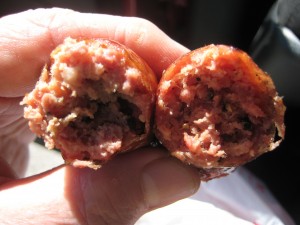
Next stop is Kreuz’s which needs less description because everything is pretty much the same as Smitty’s except that the building and the smoke pit room are recently built. But you’ll find the same meats and the same procedures, down to the pair of straight-edged spatulas the server uses to scrape the meat from the butcher block onto the serving paper.
I can’t do a straight up comparison, however, because Kreuz’s was out of brisket! That’s right, they’d sold the last of it shortly before my arrival and no more would be ready for a while. So I had to settle for a slice of “lean”, or barbecued shoulder. It was surprisingly tender for “lean” and tasted fine on a sandwich. The rib was suspiciously light in color but had the smokiest flavor of anything so far. The sausage was fine and tasted a lot like Smitty’s—which isn’t surprising because they apparently come from the same source (see photo).
If you’re headed to Lockhart I’ll send you to Smitty’s, I think. The food is marginally better at Kreutz’ but not enough to make up for the atmosphere at Smitty’s. Still, neither one will give you the best barbecue I’ve had in Texas. For that you have to wait until Saturday and journey a little farther, in a different direction, to Snow’s in the tiny and out of the way town of Lexington.
Snow’s caused a stir in winter 2009 because it was named over the Lockhart twins as the best barbecue in Texas by Texas Monthly, and soon after that the lines were out the door on Main Street and the barbecue was selling out by 10 am. It’s a tribute that the folks at Snow’s (who have other jobs and only smoke for the weekends because traditionally that is when the ranchers brought their cattle to auction) kept their good humor and quality and perspective through it all. Now (4 months after the article) the lines are down to a manageable size again.
What makes Snow’s the best? First, the brisket is sublime. Mine had a perfect smoke ring… pink around the edges of the meat and also pink inside along a layer of fat separating two layers of muscle. (Brisket is the “chest” of the animal, in the very front between the two front legs where a number of muscles come together in a criss-cross arrangement.) And not only was it fork-tender, it fell apart at the first touch of the fork.
Ribs were at least as good as Kreuz. (You may have guessed that pork ribs aren’t really my thing. If made from a commercial pig, they have a pleasant and not very complex flavor and you really can’t go wrong so long as the excess fat is cooked away.) And the sausage was crackling with goodness, cooked until the interior fat was boiled through the skin leaving it crispy and the interior hollow in spots.
Aside from the meat, what makes Snow’s special is that they are good marketers of what they sell. And this is important. It is one thing to bite into a perfect apple in a farmer’s market, something else to dine in a restaurant where a good chef has taken the trouble to ensure that everything is coordinated for a satisfying experience. Snow’s does this where the other establishments don’t.
You can get a plate with sides (solid Texas renditions of mustardy potato salad and vinegary slaw). You can have endless, very good, smoky pinto beans at no extra charge. You can take it outside and dine on picnic tables surrounded by barbecue pits and assorted rolling smokers which I assume are used to cater events in other locations. And you can even get it mail order since they’ve discovered if you smoke once a weekend you might as well smoke again (on Saturday, while the counter is open) and freeze that meat and send it around the country.
But Snow’s does have a weakness and it is their sauce, a sour blend informed by the insidious Carolina influence which has spread across Texas in recent years like Johnson grass. (Thank goodness there is no “pulled pork” at Snow’s.) . Do not under any circumstances put it on your food until you have tasted the meat naked, followed by a trial squirt of the excellent Cajun Chef hot sauce on the table. This should be all you need, especially because Snow’s meat tends toward the salty side and the hot sauce acts as a corrective.
It’s nice to know that the best barbecue store in Texas still has room for improvement. I will be back.
